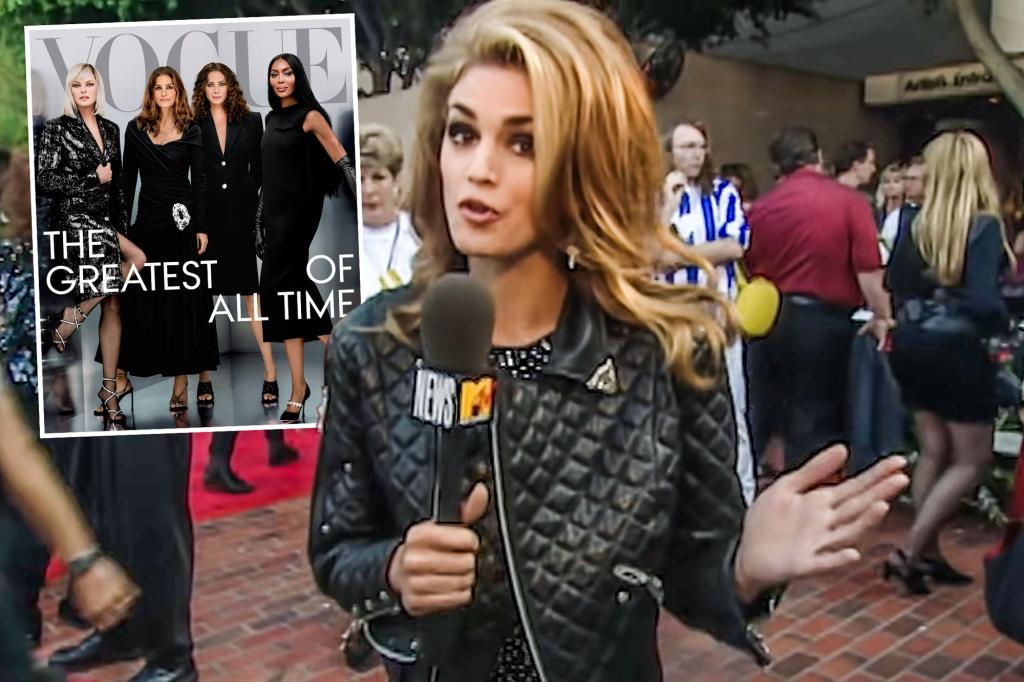Cindy Crawford took a risk by choosing to host MTV’s new fashion-focused show, “House of Style,” for free in 1989 at the age of 23, despite being an established model making significant money. The show provided viewers with a glimpse behind the scenes of the fashion and modeling industries, showcasing a blend of haute couture and pop culture. Crawford’s involvement in the show gave her a voice and helped turn her and other models featured on the show into supermodels, eventually leading to iconic moments in pop culture like Crawford’s appearance in a Pepsi ad and George Michael’s music video for “Freedom ’90” with Naomi Campbell, Linda Evangelista, Tatjana Patitz, and Christy Turlington.
“House of Style” was part of a surge of fashion television in the 1980s and 1990s, with other shows like CNN’s “Style with Elsa Klensch” and Canada’s “FashionTelevision” and “Style File.” These programs turned models into supermodels, designers into pop stars, and runway presentations into extravagant events. The rise in popularity of fashion television contributed to the supermodel phenomenon and helped bring fashion to a wider audience. However, by the 2010s, many fashion news shows were replaced by reality TV competitions and red carpet programs, as social media platforms allowed fashion brands to share their content directly with audiences.
The inception of “House of Style” on MTV in 1989 marked a new era for the music video channel. Previously focused on music, MTV expanded into news, politics, sports, and culture, with fashion and beauty brands eager to market their products to the channel’s young and trendy audience. The success of the show indicated a strong connection between music and fashion, with the influence of fashion television leading to models becoming household names and designers achieving celebrity status. The combination of fashion, music, and culture proved to be a winning formula for attracting viewers.
“House of Style” gave Cindy Crawford a platform to share her perspective on the fashion industry and helped establish her as more than just a model. The show blended glamour and intimacy, showcasing unique behind-the-scenes moments with fashion icons like Naomie Campbell and Todd Oldham. The series appealed to a wide audience, providing a mix of irreverence and high fashion that resonated with viewers. Crawford’s involvement in the show also paved the way for other models to transition into media roles and carve out careers beyond the runway.
The impact of shows like “House of Style” and “Style with Elsa Klensch” was profound, as they introduced fashion as a serious, multifaceted industry to a broad audience. Elsa Klensch, with her distinctive style and straightforward approach, set a standard for fashion journalism that inspired many in the industry. The popularity of these shows indicated a shift towards taking fashion more seriously as an art form, with the potential to influence culture and society. While the format of fashion television has evolved over the years, the legacy of these groundbreaking shows continues to shape the way fashion is consumed and perceived in contemporary culture.
Despite the shift away from traditional fashion television towards digital platforms and reality TV, the influence of shows like “House of Style” is still felt in the fashion industry today. Social media has democratized fashion, allowing individuals to share their opinions and creations with a global audience. While the landscape of fashion media may have changed, the spirit of innovation and inclusivity brought to the forefront by shows like “House of Style” lives on through new platforms and content creators. The nostalgia for these pioneering fashion shows represents a yearning for a simpler time in the fashion world when creativity and fun were at the forefront, inspiring a new generation of fashion enthusiasts to explore their own unique style.


